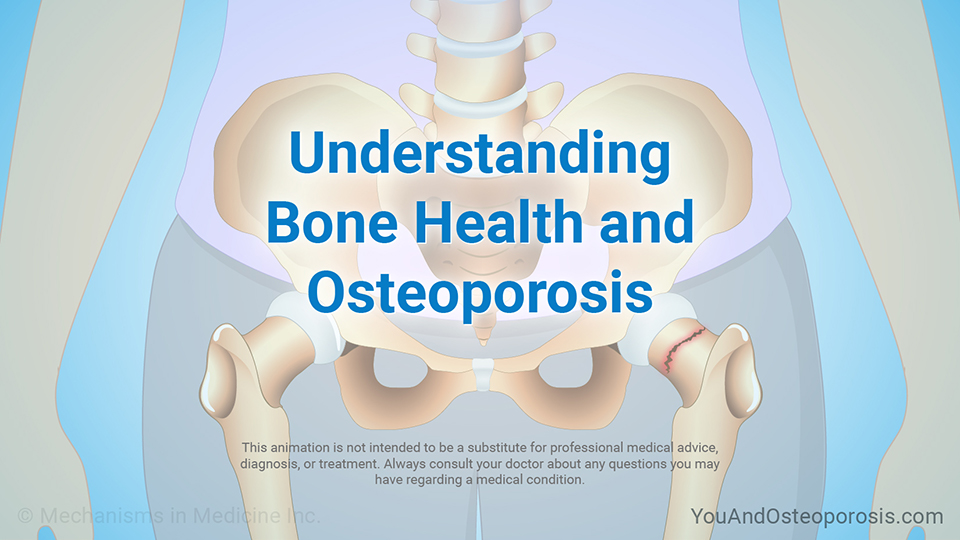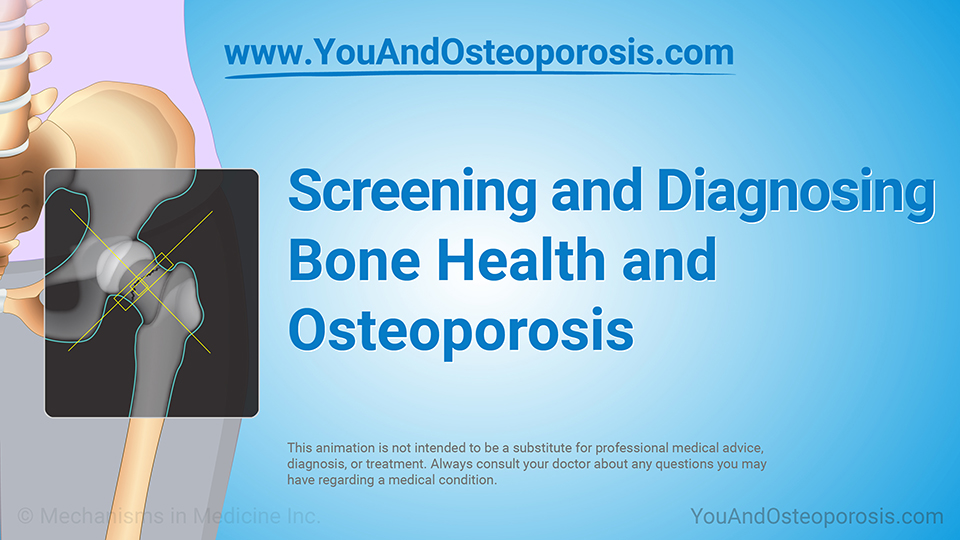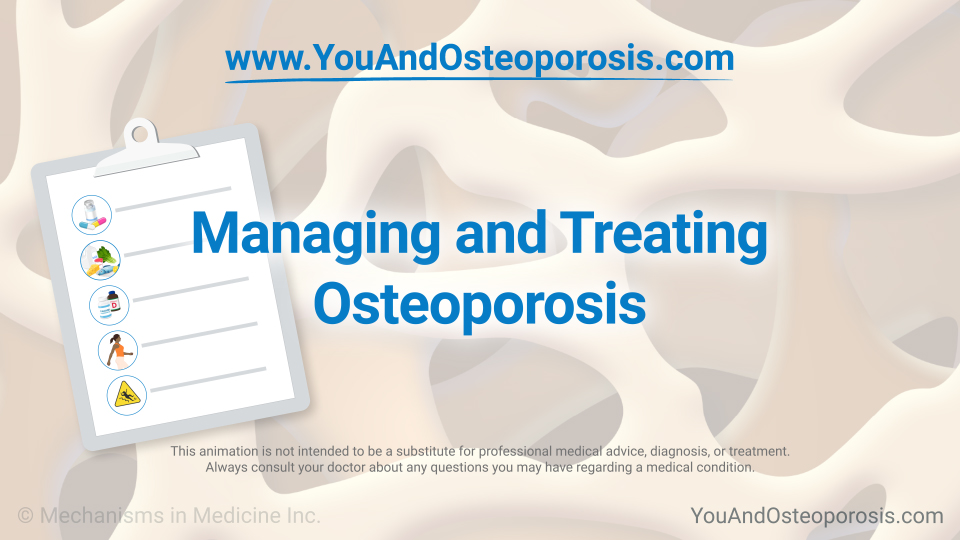
Animation - Managing and Treating Osteoporosis
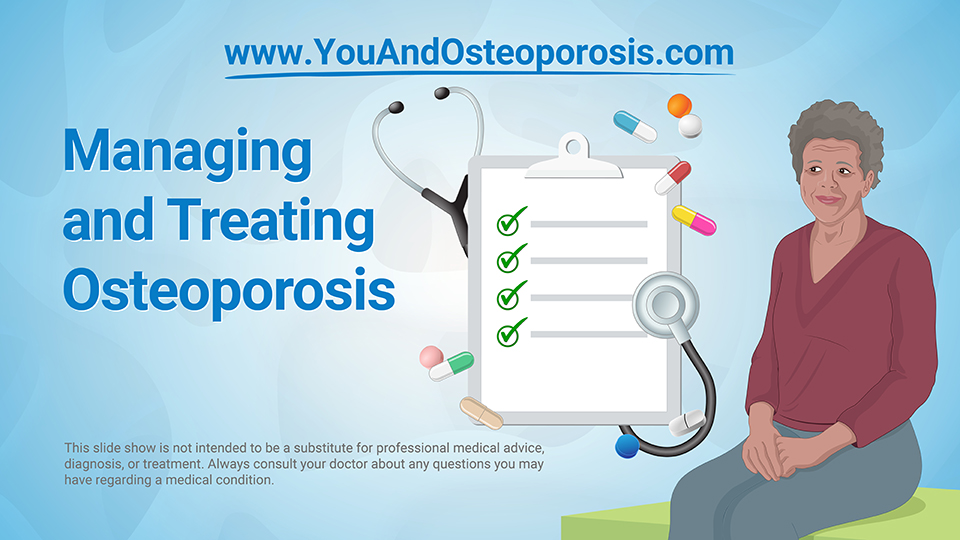
Slide Show - Managing and Treating Osteoporosis

1.
What treatments are used for osteoporosis?
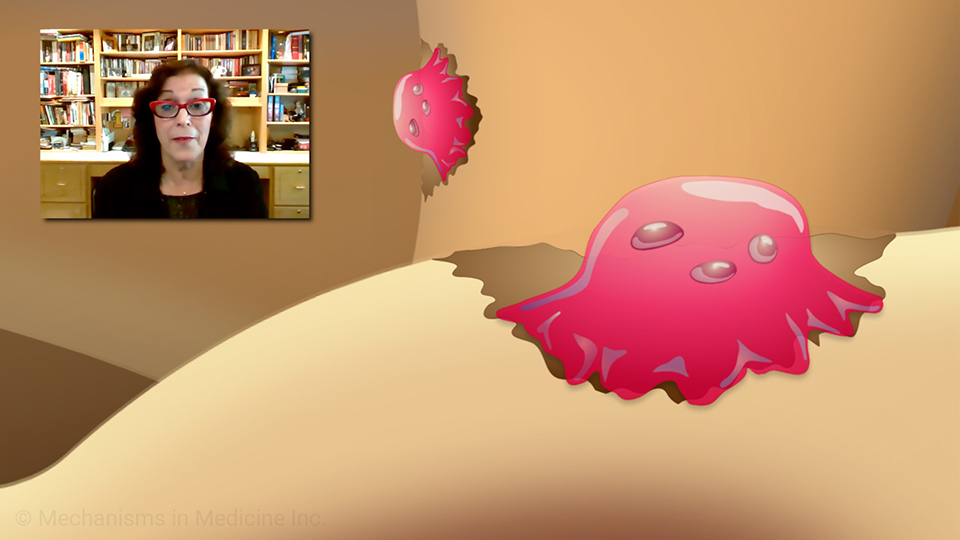
2.
How do antiresorptive drugs work in osteoporosis?
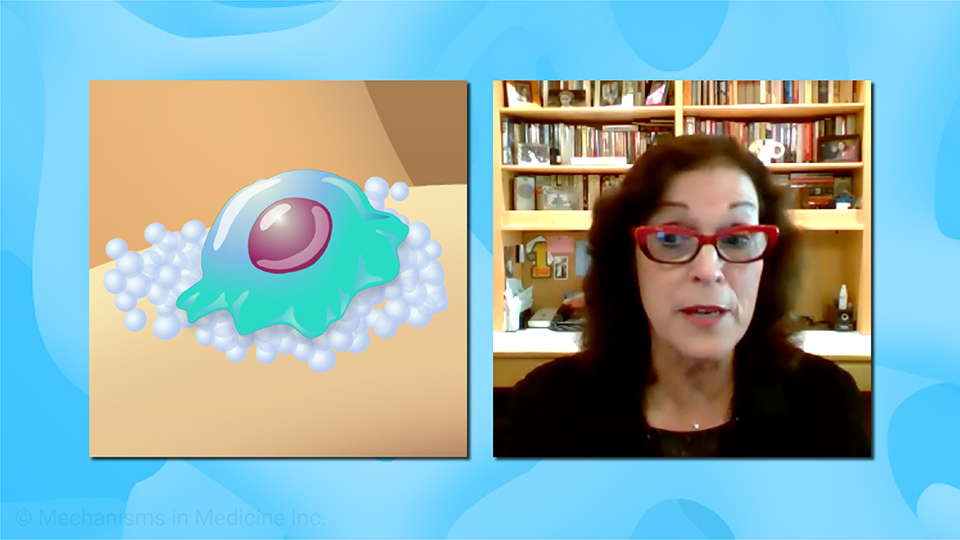
3.
How do anabolic drugs work in osteoporosis?

4.
How does calcium and vitamin D help build healthy bones?

5.
What are the best management strategies for a person with osteoporosis?

6.
What is a drug holiday when it comes to osteoporosis medication?

7.
Dr Tilli's story: What did you do when you found out you had osteoporosis?

8.
Dr Tilli's story: What advice do you have for other patients on their journey with osteoporosis?

9.
Shelley's story: What did you do when you found out you had osteoporosis?
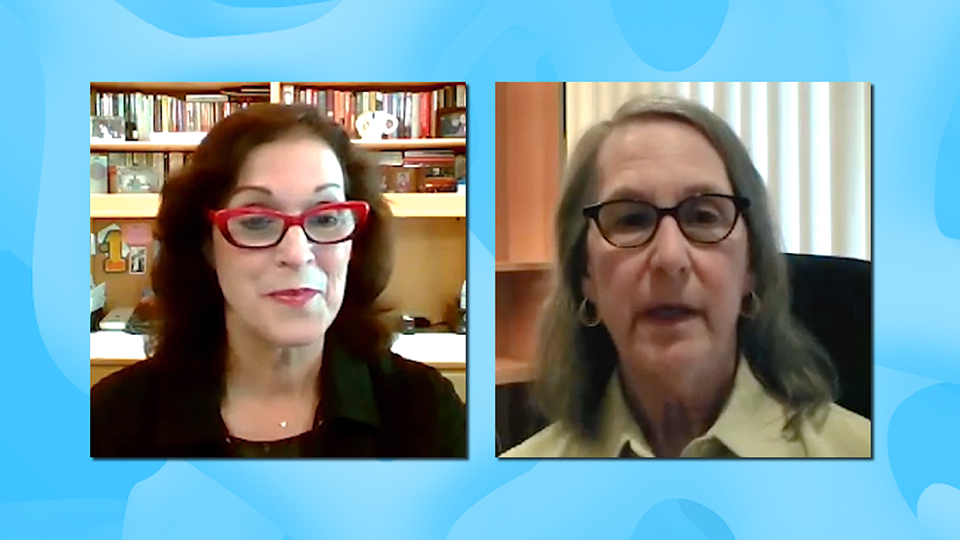
10.
Shelley's story: What has been the greatest success and challenge with managing your bone health?
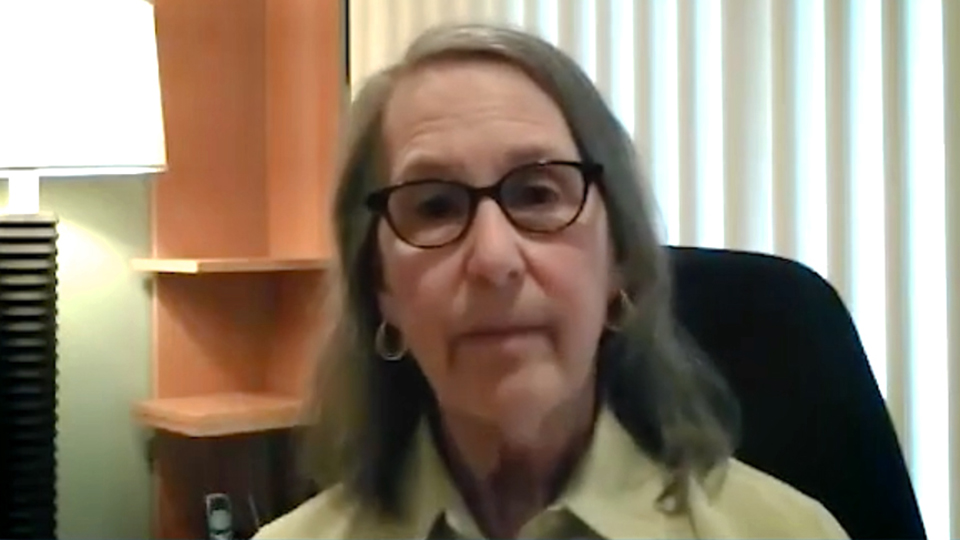
11.
Shelley's story: What advice do you have for other patients about bone health and osteoporosis?
Slide Show - Managing and Treating Osteoporosis
This slide show provides an overview of the management and treatment of osteoporosis. If your testing shows that you have osteoporosis, your doctor will work with you to create a treatment plan that can help improve your bone health and reduce your risk of complications. An osteoporosis treatment plan will likely include medications as well as lifestyle changes, such as eating a healthy diet, getting the right amount of calcium and vitamin D, exercise and staying active safely, and preventing falls. Watch to learn about the most common osteoporosis medications and how they can help slow the breakdown of bone in your body, or help to build new bone. If you have questions about your osteoporosis treatment plan, talk with your doctor or another member of your healthcare team.
Your feedback is important to us! We will use your feedback to develop future areas of content about osteoporosis which will help other patients, caregivers and families.
Please rate this content:
Section: Managing and Treating Osteoporosis

 Expert Videos
Expert Videos





 Patient Videos
Patient Videos






Animation - Managing and Treating Osteoporosis

Slide Show - Managing and Treating Osteoporosis

1.
What treatments are used for osteoporosis?

2.
How do antiresorptive drugs work in osteoporosis?

3.
How do anabolic drugs work in osteoporosis?

4.
How does calcium and vitamin D help build healthy bones?

5.
What are the best management strategies for a person with osteoporosis?

6.
What is a drug holiday when it comes to osteoporosis medication?

7.
Dr Tilli's story: What did you do when you found out you had osteoporosis?

8.
Dr Tilli's story: What advice do you have for other patients on their journey with osteoporosis?

9.
Shelley's story: What did you do when you found out you had osteoporosis?

10.
Shelley's story: What has been the greatest success and challenge with managing your bone health?

11.
Shelley's story: What advice do you have for other patients about bone health and osteoporosis?

